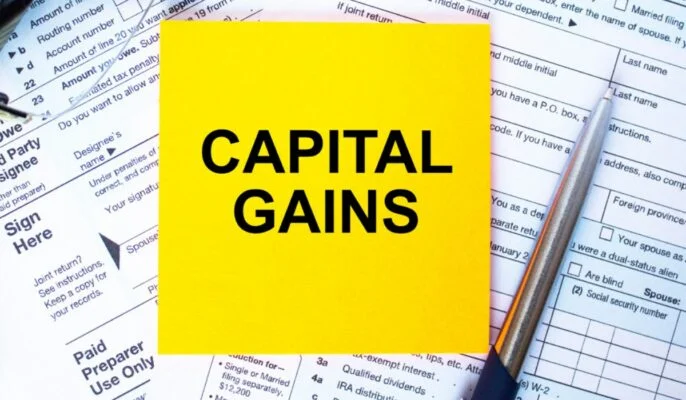Comprehensive Guide to Section 50 of the Income Tax Act
Introduction to Section 50 of the Income Tax Act
Section 50 of the Income Tax Act, 1961, provides special provisions for the computation of capital gains in the case of depreciable assets. This section is crucial for businesses and individuals holding assets that have undergone depreciation and are part of a block of assets. The primary objective of Section 50 is to determine the nature and quantum of capital gains arising from the transfer of such depreciable assets.
Key Provisions of Section 50
Scope and Applicability:
- Section 50 applies to capital assets that are part of a block of assets in respect of which depreciation has been allowed under the Income Tax Act, 1961, or under the Indian Income-tax Act, 1922.
- It is important to note that the provisions of Sections 48 and 49 are subject to modifications specified in Section 50 when dealing with depreciable assets.
Computation of Capital Gains:
Full Value of Consideration:
The full value of consideration received or accruing as a result of the transfer of an asset, together with the full value of consideration received or accruing as a result of the transfer of any other capital asset falling within the block of assets during the previous year, is considered.
Expenditure on Transfer:
Expenditure incurred wholly and exclusively in connection with such transfer(s) is deducted.
Written Down Value (WDV):
The written down value of the block of assets at the beginning of the previous year is deducted.
Cost of New Assets:
The actual cost of any asset falling within the block of assets acquired during the previous year is also deducted.
Deemed Short-term Capital Gains:
Any excess amount is deemed to be the capital gains arising from the transfer of short-term capital assets.

Special Provisions for Goodwill:
- For assessment years beginning on or after April 1, 2021, goodwill of a business or profession is not considered a depreciable asset.
- The written down value of the block of assets, which includes goodwill, is determined in a prescribed manner, and any capital gains arising are deemed to be short-term capital gains.
Legal Amendments and Circulars:
- Over the years, several legislative amendments have been made to Section 50 to address various issues related to the computation of capital gains for depreciable assets.
- Departmental circulars and Finance Acts have provided clarifications and detailed explanations of these amendments to ensure taxpayers and professionals understand the provisions clearly.
Practical Implications
Depreciation and Capital Gains:
- Depreciation allowed on assets reduces their book value. When such an asset is sold, the difference between the sale price and the reduced book value (WDV) is considered for capital gains computation.
- Section 50 ensures that any capital gain arising from the sale of depreciable assets is treated as short-term capital gain, regardless of the holding period of the asset.
Impact on Businesses:
- Businesses holding significant depreciable assets need to be aware of these provisions for accurate tax planning and compliance.
- The special treatment of goodwill and other intangible assets under Section 50 necessitates careful consideration during mergers, acquisitions, and business restructuring.
Case Laws and Judicial Interpretations:
- Various judicial pronouncements have clarified the scope and application of Section 50, providing valuable insights into its interpretation.
- For instance, the Supreme Court’s ruling in the case of CIT v. Stanes Motors (South India) Ltd. emphasized that Section 50 is applicable only if depreciation has been actually allowed to the assessee.
Detailed Example
To better understand the application of Section 50, consider the following example:
Scenario:
- A company owns a block of machinery (depreciable assets) with a written down value (WDV) of Rs. 1,000,000 at the beginning of the financial year.
- During the year, the company acquires new machinery worth Rs. 500,000 and sells old machinery for Rs. 800,000.
Computation of Capital Gains:
- Full value of consideration for the sold machinery: Rs. 800,000
- Expenditure on transfer: Rs. 20,000 (for example, legal fees and other expenses related to the sale)
- Written down value (WDV) of the block at the beginning of the year: Rs. 1,000,000
- Cost of new machinery acquired during the year: Rs. 500,000
Calculation: Capital Gains=(800,000−20,000)−(1,000,000−500,000)\text{Capital Gains} = (800,000 – 20,000) – (1,000,000 – 500,000)Capital Gains=(800,000−20,000)−(1,000,000−500,000) Capital Gains=780,000−500,000=280,000\text{Capital Gains} = 780,000 – 500,000 = 280,000Capital Gains=780,000−500,000=280,000
The capital gains of Rs. 280,000 are deemed to be short-term capital gains under Section 50.
FAQs
Q1: What is the primary purpose of Section 50 of the Income Tax Act?
A1: The primary purpose of Section 50 is to provide a specific method for computing capital gains on depreciable assets, ensuring that the benefits of depreciation are not availed twice.
Q2: How are capital gains computed under Section 50?
A2: Capital gains are computed by considering the full value of consideration received from the transfer of depreciable assets, deducting the expenditure on transfer, the written down value of the block of assets, and the cost of new assets acquired during the previous year. The excess amount is deemed to be short-term capital gains.
Q3: Does Section 50 apply to all capital assets?
A3: No, Section 50 specifically applies to depreciable assets that are part of a block of assets for which depreciation has been allowed under the Income Tax Act.
Q4: How is goodwill treated under Section 50?
A4: For assessment years beginning on or after April 1, 2021, goodwill of a business or profession is not considered a depreciable asset. The written down value of the block of assets, including goodwill, is determined in a prescribed manner, and any capital gains arising are deemed to be short-term capital gains.
Q5: Are there any judicial pronouncements that clarify the application of Section 50?
A5: Yes, various judicial pronouncements, such as the Supreme Court’s ruling in CIT v. Stanes Motors (South India) Ltd., have clarified the scope and application of Section 50.
Q6: How do legislative amendments impact the provisions of Section 50?
A6: Legislative amendments and departmental circulars provide clarifications and address issues related to the computation of capital gains for depreciable assets, ensuring taxpayers and professionals understand and comply with the provisions effectively.
Conclusion
Understanding Section 50 of the Income Tax Act is essential for taxpayers and professionals dealing with depreciable assets. It outlines the specific method of computing capital gains for such assets, ensuring that the benefits of depreciation are not availed twice. Keeping abreast of the legislative amendments and judicial interpretations helps in accurate tax planning and compliance, ultimately contributing to efficient financial management.
For more insights on various sections of the Income Tax Act, visit Smart Tax Saver.

Leave a Reply